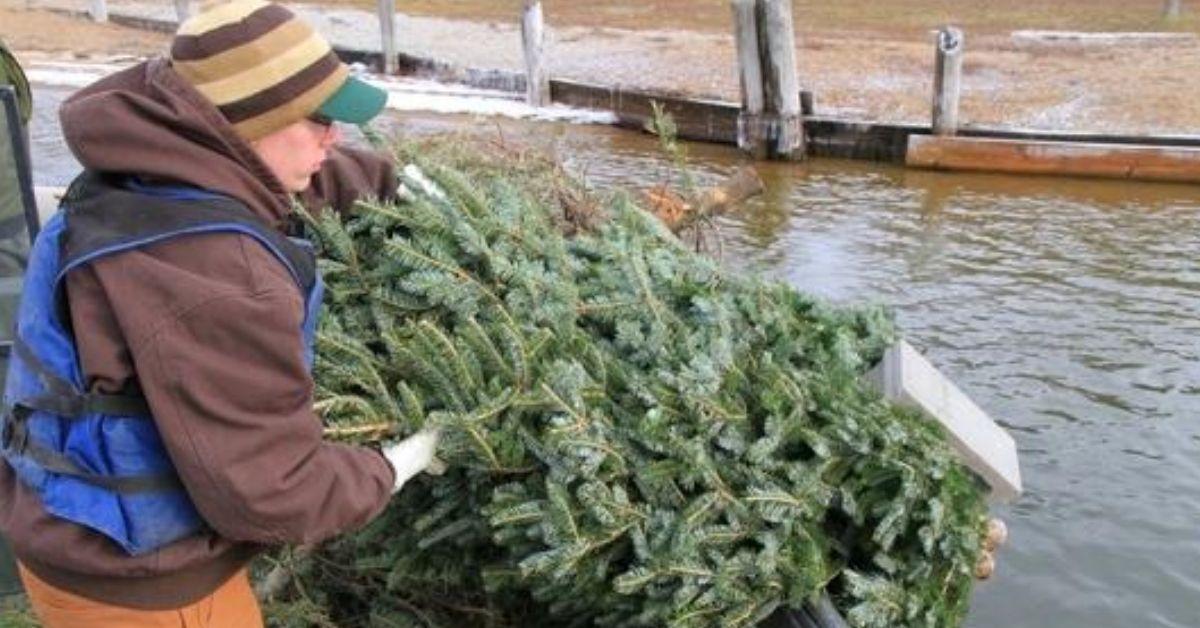How Christmas Trees Grow Big Fish And Help Save Lives
Tens of MILLIONS of Christmas trees will be burned, tossed to the curb, or repurposed in other ways after the holidays. However, some anglers are using old Christmas trees in clever ways.
Here are two ways to repurpose Christmas trees that involves fishing:
Dump ‘Em In The Lake (If You Can)
The most popular way anglers reuse old Christmas trees is by sinking them into ponds or lakes. The added structure and cover provide a sanctuary or ambush point for fish. They also become a secret honey hole for the angler who dumped the tree in the first place. Please be aware that not all states allow this practice, so please check regulations before sinking any trees.
Christmas Trees - The Original GPS For Ice Anglers Up North
Lake Winnebago is Wisconsin’s largest inland lake and is famous for its ice fishing culture. Anglers drive miles out on snowmobiles, ATV’s and trucks each winter to get to their favorite fishing holes. To help prevent people from getting lost or venturing onto unsafe ice, local fishing clubs use old Christmas trees to serve as directional markers for people exploring the frozen lake.
One Special Fishing Club
Each winter, the Pipe Fishing Club provides ice safety reports, plows safe pathways on the ice, and hosts fundraisers to grow the sport of ice fishing.
Lake Winnebago Christmas Tree Guideline
At the half-mile marker or every 5 trees, the tree is turned upside down. This is to indicate a half-mile of travel.
Lake Winnebago Christmas Tree Mile markers are as follows:
2 trees = 1 miles
3 trees = 2 miles
4 trees = 3 miles
5 trees = 4 miles
6 trees = 5 miles
Trees lying down mean poor ice conditions or danger. Please steer clear of these areas. Never move any trees on the lake, as they all serve a purpose.
Updated December 20th, 2021 at 6:02 AM CT


